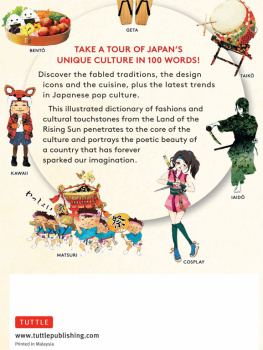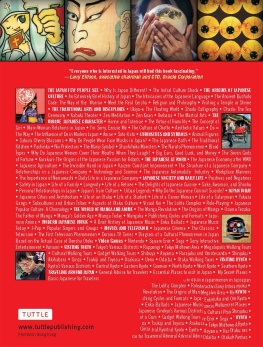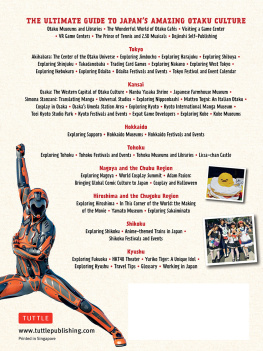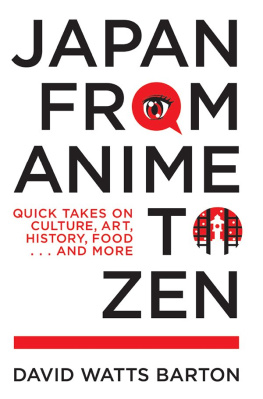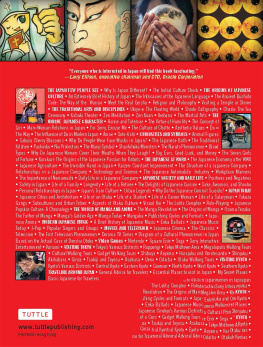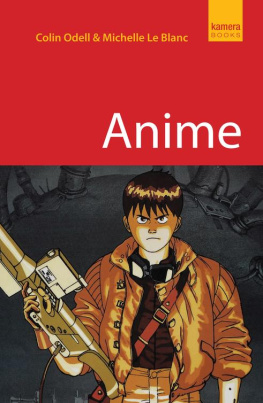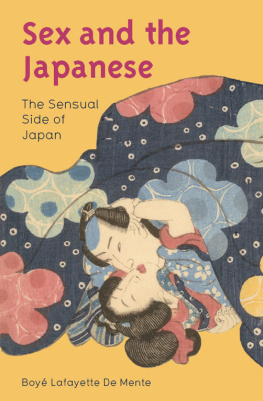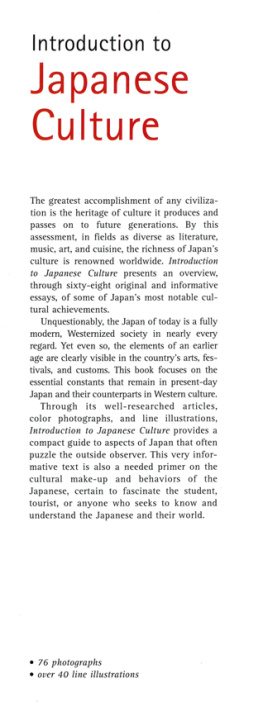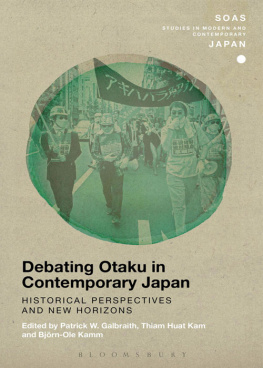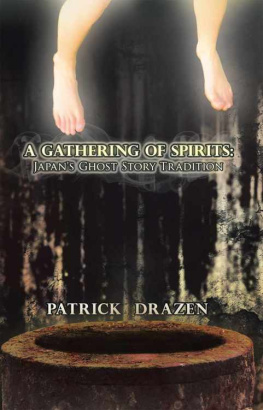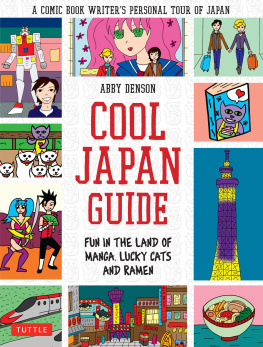Table of Contents
Guide
JAPAN
IN
100 WORDS
FROM ANIME TO ZEN
Discover the Essential
Elements of Japan
JAPAN
IN
100 WORDS
FROM ANIME TO ZEN
Discover the Essential
Elements of Japan
Ornella Civardi & Gavin Blair
Illustrations by Ayano Otani
ANIME
FUGU
FUROSHIKI
HASHI
BONSAI
Furoshiki
Traditional Cloth Wrappers and Carriers
Gaman
The Japanese Concept of Stoicism and Strength
Hina matsuri
The Japanese Doll Festival or Girls Day
Ainu
The Native People of Hokkaido
Though less well-known than many
others, the story of Japans Ainu
people is sadly reminiscent of indig
enous populations around the globe:
subjugation, stolen lands and the
destruction of culture and language.
One legend says, Ainu lived in this
place a hundred thousand years
before the Children of the Sun came.
In reality, it was likely thousands of
years before the Japanese arrived.
They once occupied the northern part
of the main Honshu island, Hokkaido,
and the Kuril Islands, now controlled
by Russia. During the middle ages,
the Japanese pushed them northward
and brought diseases that, along with
conflicts, decimated their popula
tions and confined them to Hokkaido.
Ainu genetics link them to the
people of Tibet, the Indian Andaman
Islands, northern Myanmar and
Okinawa. They were generally lighter
skinned, more hirsute, had deep-set
wide eyes and were bigger than the
Japanese. Ainu were animistic hunter
gatherers who believed the bear to
be the most important of the spirits
that occupy all nature. Tradition
ally, the men never shaved and the
women tattooed themselves around
their mouths and sometimes on their
forearms. They lived in villages of
thatched huts and dressed in robes
spun from elm tree bark, tied with a
waistband, with leggings of deerskin
in winter.
JAPAN IN 100 WORDS
From the 16th century, Japan colo
nized Hokkaido, again taking Ainu
lands and suppressing their culture,
annexing the island in 1869. In 1899,
an act declared Ainu former aborigi
nes and forced assimilation, banning
their language, tattoos and other
elements of their culture. The act was
not repealed until 1997 and they were
partly acknowledged as indigenous
people in 2008. In February 2019, a
law formally recognized Ainu culture
and laid out measures to preserve it.
Fewer than 20,000 people now iden
tify themselves as Ainu, though the
true number may be ten times that,
as discrimination led many to hide
their roots. Only a handful of people
still speak the Ainu language, though
efforts are underway to revive it.
Anime
Japanese Animated Films
Though elsewhere anime refers to
Japanese cartoon films and TV series,
in Japan the term is used to describe
all animated content.
The genres of anime are legion,
spanning frivolous stories of kids at
ninja school to epic dystopian tales
addressing philosophical themes.
The history of anime can be traced
back to a few short films made in 1917,
including Namakura Gatana, though
earlier productions are likely to have
existed. The nascent industry was
devastated by the Great Kant Earth
quake of 1923, which razed much of
Tokyo. A pivotal moment came in 1948
with the founding of what is now the
leading studio, Toei Animation. As
well as creating some of animes semi
nal works, such as Dragon Ball, Sailor
Moon and One Piece, Toei Animation
was instrumental in the careers of
directors Osamu Tezuka, Leiji Mat
sumoto and Studio Ghibli founders
Hayao Miyazaki and Isao Takahata.
JAPAN IN 100 WORDS
Tezukas seminal Tetsuwan Atomu
TV series began screening in 1963,
which helped to set the pattern for
anime adaptations of manga and
popularize robot and space-themed
productions. Other new anime styles
born in the 1960s included sport and
erotica, along with the family tale
Sazae-san, which became a national
institution with a world record of
more than 7,500 weekly episodes.
The 1970s and 1980s saw the fur
ther rise of robot anime, with stories
like Gundam garnering fans world-
wide. Anime also began tackling more
weighty subjects, with Takahatas
wartime Grave of the Fireflies for
Studio Ghibli and Katsuhiro Otomos
post-apocalyptic Akira both released
in 1988.
Two more watershed moments
came in 1995, with Hideaki Annos
ambitious Neon Genesis Evangelion
series redefining the robot genre, and
Mamoru Oshiis cyberpunk classic
Ghost in the Shell asking existential
questions.
Studio Ghibli was all-conquering
in the late 1990s and 2000s, with
Miyazakis Princess Mononoke (1997)
only topped by his own Spirited Away,
which won the best animated film
Oscar and set an unbeaten Japanese
box office record. Today, it is a 2
trillion yen industry.
Bent
Iconic Box Lunches
At one level, the bent is simply a
lunch box containing ready-to-eat
food in separate compartments. But it
carries a deeper meaning in Japanese
culture than its function might sug
gest and is often referred to honorifi
cally as o-bent.
The precise origins of bent are
unclear, but the word has been in use
since the 13th century to refer to the
box itself, traditionally made from
lacquer since the 16th century. Bent
have certainly been eaten for centu
ries at hanami cherry blossom view
ing parties, as well between acts at
traditional N and Kabuki theatrical
performances.
In more recent times, the most
common consumers of bent have
EKIBEN
JAPAN IN 100 WORDS
BENT AND
ONIGIRI
been schoolchildren and salariiman
office workers. Homemade o-bent
is seen not only as a means of pro
viding a balanced, nutritious and
aesthetically pleasing meal, but also
an expression of the makers love for
the recipient. That task has fallen
almost entirely on women, who often
feel considerable social pressure to
create these mini masterpieces on a
daily basis, even though konbini-bent
are readily available at convenience
stores. As the number of working
women has increased sharply in
recent years, many mothers have
felt obliged to get up even earlier to
prepare bent for their husbands and
children.
These days, bent boxes come in
many shapes and sizes, with designs
featuring characters from anime or
manga popular with children. Even
the food inside can be intricately
prepared to form kyaraben (charac
ter bent), which look like characters
from popular culture.

